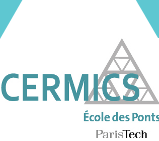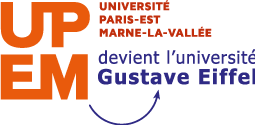What is Premia
Premia is a software designed for option pricing, hedging and financial model calibration. It is provided with it's C/C++ source code and an extensive scientific documentation.
Efficient computations of prices and hedges for derivative products are major issues for financial institutions. The development of increasingly complex financial products requires the use of advanced stochastic and numerical analysis techniques. A consortium of banks have been using Premia since it's beginning in 1999 and have brought important contributions to the project.
Premia is developed by the MathRisk team which gathers research scientists from INRIA (the French national institute for research in computer science and control), Ecole des Ponts ParisTech (CERMICS laboratory on applied mathematics and computing), and the Gustave Eiffel University.
Major features of Premia :
- Pricing of Interest Rate Derivatives
- Pricing of Credit Risk Derivatives
- Pricing and Hedging of Equity Derivatives in Black-Scholes and Heston models
- Pricing and Hedging of Equity Derivatives in Jump models
- Calibration in Jump models
- Neural Network and Machine Learning for High-Dimensional American Option Pricing
- Chebyshev Interpolation for Parametric Option Pricing
- Deep Hedging
- Computation of XVA
- Numerical methods for rough stochastic volatility models
- GPUs for Option Pricing
- Pricing of Variables Annuities
Overview of Premia's main features
The Mathfi team keeps track of the most recent advances in the field of computational finance. It focuses on numerical analysis techniques for both probabilistic and deterministic methods.
An important feature of Premia is its detailed documentation which provides extended references in option pricing.
Also Premia's C/C++ sources are often integrated in the consortium's own financial softwares.
The aim of the Premia project is to :
- be a powerful testing platform for comparing different numerical methods
- build a link between researchers from academic and financial institutions
- provide useful teaching material to Master and PhD students in mathematical finance
- be a single entry point for accessible overviews and basic implementations of various numerical methods
Premia contains various numerical algorithms (Finite-differences, trees and Monte-Carlo) for pricing vanilla and exotic options on equity, interest rate, credit and energy derivatives.
Equity derivatives
Black-Scholes model (up to dimension 10), stochastic volatility models (Hull-White, Heston, Fouque-Papanicolaou-Sircar), models with jumps (Merton, Kou, Tempered stable processes, Variance gamma, Normal inverse Gaussian), Bates model.
For high dimensional American options, Premia provides the most recent Monte-Carlo algorithms: Andersen-Broadie, Longstaff-Schwartz, Barraquand-Martineau, Tsitsklis-Van Roy, Broadie-Glassermann, quantization methods Malliavin calculus based methods.
Dynamic Hedging for Black-Scholes and jump models is available.
Calibration algorithms for some models with jumps, local volatility and stochastic volatility are implemented.
Interest rate derivatives
HJM and Libor Market Models (LMM): affine models, Hull-White, CIR++, Black-Karasinsky, Squared-Gaussian, Li-Ritchken-Sankarasubramanian, Bhar-Chiarella, Jump diffusion LMM, Markov functional LMM, LMM with stochastic volatility.
Premia provides a calibration toolbox for Libor Market model using a database of swaptions and caps implied volatilities.
Credit derivatives: CDS, CDO
Reduced form models and copula models are considered.
Premia provides a toolbox for pricing CDOs using the most recent algorithms (Hull-White, Laurent-Gregory, El Karoui-Jiao, Yang-Zhang)
Hybrid products
PDE solver for pricing derivatives on hybrid products like options on inflation and interest or change rates is implemented.
Energy derivatives: swing options
Mean reverting and jump models are considered.
Premia
provides a toolbox for pricing swing options using finite
differences, Monte-Carlo Malliavin-based approach and quantization
algorithms.
Consortium using Premia
Premia is developed in interaction with a consortium of financial institutions presently composed of Crédit Agricole Corporate and Investment Bank, Natixis.
The participants of the consortium finance the development of Premia (by contributing to the salaries of expert engineers hired by the MathRisk project every year to develop the software) and help to determine the directions in which the project evolves.
Financial institutions interested in joining the consortium may contact premia@inria.fr.
Every year, during a "delivery meeting", a new version of Premia is presented to the consortium by the members of the MathRisk project working on the software. This presentation is followed by a discussion on the features to be incorporated in the next release.
In addition, between delivery meetings, MathRisk project members meet individual consortium participants to further clarify their needs and interests.
After the release of each new version of Premia, two year older versions become available on this web site and can be freely downloaded for academic purposes.
The consortium is composed of the following financial institutions :
Current Premia team
Development leader
- Jérôme LELONG, Grenoble INP - UGA, France
Permanent contributors
- Aurélien ALFONSI, Ecole des Ponts ParisTech, France
- Benjamin JOURDAIN, Ecole des Ponts ParisTech, France
- Ahmed KEBAIER, Paris 13 University, France
- Oleg KUDRYAVTSEV, Russian Customs Academy, Russia
- Céline LABART, Université de Savoie Mont-Blanc, France
- Ludovic GOUDENEGE, CentraleSupélec, France
- Xiao WEI, CUFE Beijing, China
- L.A. Abbas-Turki, LPMA-UPMC, France
Administrative assistant
- Derya GOK, INRIA, France
Scientific leader
- Antonino ZANETTE, Udine University, Italy
Steering committee
- Bernard LAPEYRE, Ecole des Ponts ParisTech, France
- Agnès SULEM, INRIA, France
Scientific partners
- Vlad BALLY, Gustave Eiffel University, France
- Arturo KOHATSU-HIGA, Ritsumeikan University , Japan
- Damien LAMBERTON,Gustave Eiffel University, France
- Nicolas PRIVAULT, City University of Hong Kong, China
Development leader
- Claude MARTINI, ZELIADE, France (1999 -- 2002)
(from Ecole des Ponts ParisTech) for his contribution to the NSP interface
Development staff
- Sonke BLUNCK, INRIA, France
- Marian CIUCA, Ecole des Ponts ParisTech, France
- Pierre COHORT, INRIA, France
- Jose DA FONSECA, ESILV Courbevoie, France
- Vincent LEMAIRE, Paris 6 University, France
- Peter TANKOV, Ecole Polytechinique, France
- Emmanuel TEMAM, Paris 7 University, France
- Sophie VOLLE, (old) INRIA, France
- Vadim ZHERDER, Rostov State University of Economics, Russia
Development engineer
- Amaury DE LA VAISSIERE, INRIA, France
- Anton KOLOTAEV, INRIA, France
- Ismail LAACHIR, INRIA, France
Research scientists
- Christian BAYER, Wierstass Insitute Berlin, German
- A.Leitao, University of Barcellona, Spain,
- A.Molent, University of Udine, Italy
- J. L. Kirkby, Georgia Institute of Technology, Atlanta
- Francesco RUSSO, Paris 13 University, France
- Josef TEICHMANN, ETH Zürich, Switzerland
- Michel Vellekoop , Amsterdam School of Economics, The Netherlands
- Luitgard Veraart, Karlsruhe Institute of Technology, Germany
- Christa CUCHIERO, ETH, Switzerland
- Tony Lelievre, Ecole des Ponts ParisTech, France
- Julian Guyion, Ecole des Ponts ParisTech, France
- Camilla Pisani, Aarhus University
- L. O. Gracia, University of Barcellona, Spain,
- Ekaterina VOLTCHKOVA, Toulouse University, France
- M.Keller-Ressel,Vienna University of Technology
- Nina BOYARCHENKO, University of Chicago Booth School Business, USA
- Maya BRIANI, CNR Napoli, Italy
- Lucia CARAMELLINO, Roma 2 University, Italy
- Francois DUBOIS, CNAM Paris, France
- Gianluca FUSAI, Novara University of Studies, Italy
- Sergey LEVENDORSKIY, University of Texas, USA
- Roberto NATALINI, IAC Rome, Italy
- Syoiti NINOMIYA, Tokyo Institute of Technology, Japan
- Mohamed MNIF, ENIT-LAMSIN Tunis, Tunisia
- Gilles PAGES, Paris 6 University, France
- Marco PAPI, Varèse University, Italy
- Olivier PIRONNEAU, Paris 6 University, France
- Jacques PRINTEMPS, INRIA, France
- Stephane VILLENEUVE, Toulouse University, France
PhD students
- M. IBEN TAARIT, Ecole des Ponts ParisTech, France
- A.Gerbi, Ecole des Ponts ParisTech, France
- B.Diallo, Quantitative Research GMD/GMT Credit Agricole CIB
- A. Zhou, Ecole des Ponts ParisTech, France
- B.Zhang, TU Delft
- L.Fiorin,University of Padova, Italy
- Abdel AHDIDA, Ecole des Ponts ParisTech, France
- Dia EL HADJ, Marne La Vallée University, France
- Mohamed MIKOU, Marne La Vallée University, France
- Armand NGOPYOU, Evry University, France
- Mohamed SBAI, Ecole des Ponts ParisTech, France
- P.BLANC, Ecole des Ponts ParisTech, France
- Bouhari AROUNA, Ecole des Ponts ParisTech, France
- Kengy BARTY, Ecole des Ponts ParisTech, France
- Julien BERTON, Marne La Vallée University, France
- Frederic KSAS, Ecole des Ponts ParisTech, France
- Marouen MESSAOUD, INRIA, France
- Nicola MORENI, Ecole des Ponts ParisTech, France
- Laurent NGUYEN, Ecole des Ponts ParisTech, France
- Sidi-Mohamed OULD ALY, Marne La Vallée University, France
- Cristiano PARIS, IAC Rome, Italy
- Christophe PATRY, INRIA, France
- Jean-Sébastien ROY, Ecole des Ponts ParisTech, France
- Mohamed SBAI, Ecole des Ponts ParisTech, France
- Cyrille STRUGAREK, Ecole des Ponts ParisTech, France
Postdoctoral fellows
- J.Corbetta, Ecole des Ponts ParisTech, France
- Marc BARTHON-SMITH, INRIA, France
- Adel BEN HAJ YEDDER, INRIA, France
- Jean-Marc COGNET, INRIA, France
- Pierre COHORT, INRIA, France
- Anne GILLE-GENEST, Ecole des Ponts ParisTech, France
- David POMMIER, Ecole des Ponts ParisTech, France
- Ekaterina VOLTCHKOVA, Toulouse University, France
Administrative assistant
- Martine Verneuille, INRIA, France
Contacts
For any questions about technical aspects of the Premia Software package please contact: premia@inria.fr
For any questions about a presentation of
- Premia
- the MathRisk project
please contact:
INRIA
Centre de recherche Inria de Paris
2 rue Simone Iff
CS 42112 - 75589 Paris Cedex 12 - France
e-mail: agnes.sulem@inria.fr
Tel: (33) 01 39 63 55 69
CERMICS / Ecole des Ponts
6 et 8 avenue Blaise Pascal
Cité Descartes
77455 Champs-sur-Marne
Marne -la-Vallée cedex 2
email: aurelien.alfonsi@enpc.fr
Tel : (33) 01 64 15 35 29

Research project done with Ecole des Ponts ParisTech (Cermics) and the Gustave Eiffel University bilocalized in Paris and Marne la Vallée - France



Copyright ©2009-2022 Premia. All rights
reserved.

